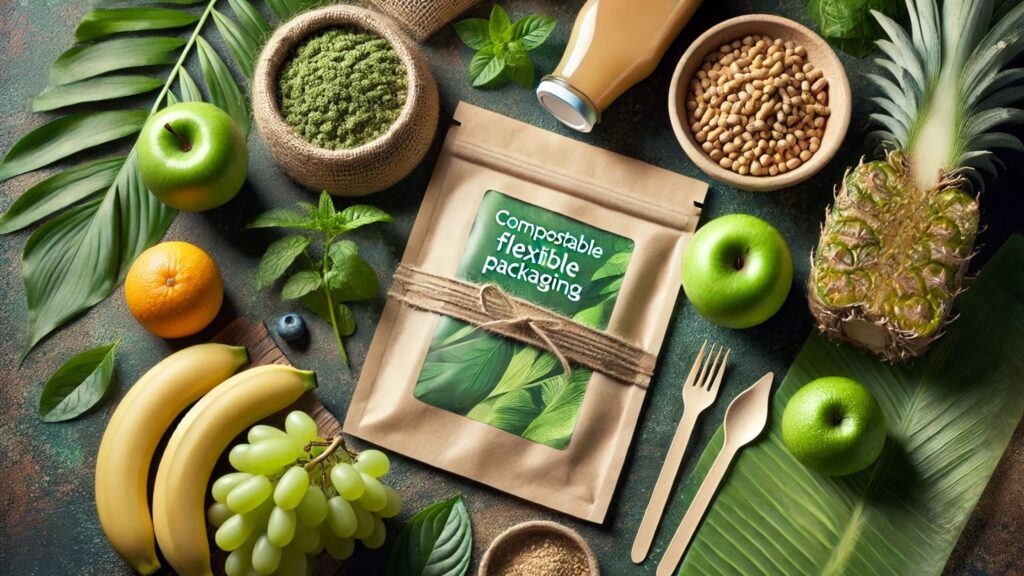In an era where sustainability is no longer an option but a necessity, businesses and consumers alike are seeking environmentally friendly alternatives to traditional plastic packaging. One innovative solution gaining traction is compostable flexible packaging—a sustainable, biodegradable, and eco-conscious alternative to conventional packaging materials.
What is Compostable Flexible Packaging?
Compostable flexible packaging is designed to break down into natural elements in a composting environment, leaving behind no toxic residues. Unlike traditional plastic, which can take hundreds of years to decompose, compostable packaging materials degrade within a few months under the right conditions. These materials are typically made from renewable resources such as plant-based polymers, cornstarch, cellulose, or polylactic acid (PLA), ensuring a lower carbon footprint.
Benefits of Compostable Flexible Packaging
- Eco-Friendly and Sustainable
Compostable packaging reduces reliance on fossil fuel-based plastics and minimizes environmental pollution. It helps reduce waste accumulation in landfills and oceans, making it a greener choice for packaging needs. - Reduces Carbon Footprint
Since compostable flexible packaging is derived from natural and renewable sources, it significantly lowers greenhouse gas emissions during production and disposal compared to traditional plastic packaging. - Supports Circular Economy
Unlike plastic, which contributes to a linear “take, make, dispose” economy, compostable packaging aligns with a circular economy model. It can be composted and returned to the earth, nourishing soil and plants. - Safe and Non-Toxic
Traditional plastics can leach harmful chemicals into food and the environment. Compostable packaging, on the other hand, is made from non-toxic, food-safe materials, making it ideal for food and beverage applications.
Industries Embracing Compostable Flexible Packaging
Several industries are transitioning to compostable flexible packaging as part of their sustainability initiatives:
- Food and Beverage: Brands are using compostable pouches, wrappers, and film for snacks, coffee, and ready-to-eat meals.
- Personal Care and Beauty: Sustainable sachets and biodegradable pouches are replacing plastic packaging for beauty and skincare products.
- Retail and E-commerce: Many companies are opting for compostable mailers and shipping materials to reduce waste from online orders.
How to Properly Dispose of Compostable Flexible Packaging
For compostable packaging to fully decompose, it must be disposed of correctly:
- Commercial Composting: Many compostable packaging solutions require industrial composting facilities with the right temperature and humidity to break down efficiently.
- Home Composting: Some packaging materials are certified for home composting and can be placed in backyard compost bins, though decomposition may take longer.
- Check Local Regulations: Not all municipalities accept compostable packaging in their organic waste collection, so it’s essential to check local guidelines for proper disposal.
The Road Ahead
As technology advances and consumer awareness grows, compostable flexible packaging is becoming a mainstream solution for reducing plastic waste. Brands looking to make a positive environmental impact should consider integrating these materials into their packaging strategies.
By making the switch to compostable flexible packaging, businesses can align with sustainability goals while meeting consumer demand for greener alternatives. Together, we can work towards a more sustainable future, one package at a time.
Related Articles
- The Future of Flex Packaging: Innovation, Sustainability, and Efficiency
- The Future of Packaging: How Digital Flexible Packaging is Transforming the Industry
- Custom Flexible Packaging: The Future of Product Presentation and Protection
- The Rise of Flexible Packaging Materials: A Game Changer in the Packaging Industry
- What is Flexible Packaging? Benefits, Uses, and Trends
- Types of Protective Packaging: Ensuring Safe Transit for Goods
- Supreme Protective Packaging: Ensuring Safety and Durability
- What is Protective Packaging? Types, Benefits & Uses
- Sustainable Protective Packaging: Eco-Friendly Solutions for a Greener Future
- The Art and Science of Packaging | Trends, History & Future

